Recycled Fiber Bio-based BRICS – Will the BRICS succeed in overcoming the West? 23-08-2023 - Arhive
Recycled Fiber Bio-based BRICS
Crude Oil Prices Trend
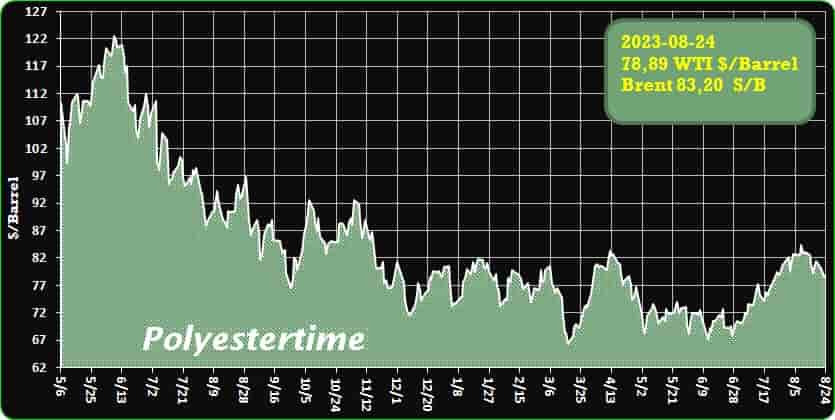
Crude Oil Prices Trend by Polyestertime
Unifi’s Dependence on Lindner Shredders: Powering the Transformation of Bottles into Recycled Fiber
Unifi, a prominent frontrunner in the domain of recycled high-performance fiber, boasts its headquarters in the United States. With its inception dating back to 2007, Unifi introduced Repreve, an innovative recycled polyester fiber that sparked a transformative journey. What began as an endeavor to recycle its internal waste swiftly evolved into a grander initiative, encompassing the collection and recycling of PET bottles. Through the establishment of the Repreve Bottle processing center and the Repreve recycling center, Unifi pioneered a pioneering process, metamorphosing plastic bottles into a triumvirate of superior components: flake, resin, and fiber. These components are harmoniously blended to produce performance-oriented recycled fiber. Recycled Fiber Bio-based BRICS
In its pursuit of transparency and authenticity, Unifi unveiled its U TRUST verification system, fortified with the advanced FiberPrint technology. This ingenious tandem served as a bulwark, corroborating all the claims tied to recycling and sustainability. A resounding achievement shines through, as Unifi, till date, has meticulously converted an astounding 35 billion plastic bottles into the bedrock of their innovation – the exclusive Repreve recycled fiber. This monumental journey rests on the synergy between various elements, prominently among them being the invaluable contribution of Lindner’s Micromat shredders. Originating from the Austrian headquarters of Lindner and facilitated through their hub in Statesville, North Carolina, these shredders are veritable pillars of the transformation process.
Central to the collaboration between Unifi and Lindner is the Micromat series of shredders – a testament to precision engineering tailored to the exacting demands of post-commercial and post-consumer plastics recycling. At its core, these shredders are fortified with high-torque motors, empowering them with the force necessary for efficient shredding. A remarkable facet of the design is the strategic optimization of operational uptime, effectively streamlining maintenance operations. This synergy between technological finesse and practical usability serves as the bedrock of Unifi and Lindner’s success.
The narrative of collaboration and innovation between Unifi and Lindner took flight in 2018 and has only flourished since. Recycled Fiber Bio-based BRICS
At the heart of Unifi’s transformational facilities, three Lindner Micromat 2000 shredders stand resolute, emblematic of an unyielding partnership. In the words of Scott Trivette, the Operations Manager of the Repreve® Recycling Centre and Future Innovation Centre in Yadkinville, North Carolina, Lindner isn’t just a supplier but a stalwart partner that remains steadfastly accessible. This becomes paramount in a production environment where a staggering 1.5 million pounds of resin are generated on a weekly basis. The operational reliability and ongoing support from Lindner have been pivotal in ensuring Unifi’s seamless operation and remarkable output.
In the intricate tapestry of sustainable innovation, Unifi stands as a beacon of eco-conscious progress. Their Repreve recycled fiber is a testament to the possibilities when technology and environmental stewardship align. This intricate process rests on a foundation laid by Lindner’s Micromat shredders – marvels of engineering that epitomize power, precision, and practicality. Their design reflects a commitment to optimizing recycling processes, minimizing waste, and maximizing output. The partnership between Unifi and Lindner transcends mere business dealings; it’s a synergy that echoes a shared vision of responsible industry practices and the relentless pursuit of a greener, cleaner world. Recycled Fiber Bio-based BRICS
In conclusion, the narrative of Unifi’s journey towards sustainable excellence is intrinsically interwoven with the contribution of Lindner’s Micromat shredders. These technological marvels empower the transformation of plastic bottles into high-quality recycled fiber, facilitating Unifi’s pioneering work in the realm of recycled high-performance fiber. As Unifi and Lindner continue their collaborative odyssey, they not only redefine industry standards but also champion the cause of environmental preservation, one shredded bottle at a time.
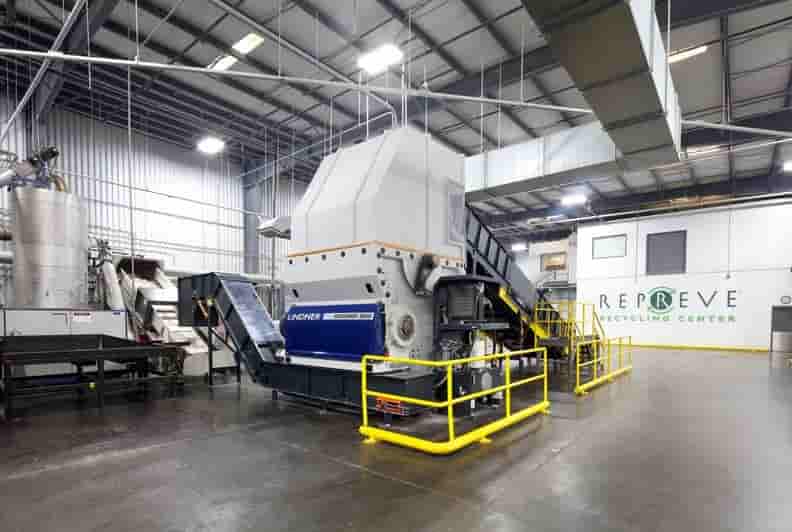
The passage you provided discusses the current economic challenges facing China and the potential implications for its future growth
Here’s a breakdown of the key points:
- Economic Growth Slowdown: China has experienced remarkable economic growth, averaging over 5% for three decades, which contributed to its status as a superpower. However, recent forecasts from major international banks suggest that China’s gross domestic product (GDP) growth rate for 2023 might fall below the 5% target set by President Xi Jinping. Some economists see this as more than a short-term slowdown and speculate it might mark a significant turning point for the Chinese economy. Recycled Fiber Bio-based BRICS
- Debt Concerns: China is facing concerns about its debt levels, which have exceeded 300% of its GDP. This debt is attributed to companies, the central government, and local administrations. The high level of debt is viewed as a potential drag on economic growth and stability.
- Real Estate Bubble: The article highlights the bursting of the real estate bubble as a worrisome sign. Major property developers like Evergrande and Country Garden have accumulated significant debts due to extensive urban development. However, demand for housing has declined due to factors like a shrinking population, reduced disposable income, and lower confidence in the future. Since the real estate sector constitutes a significant portion of the Chinese economy, its crisis could potentially affect the broader economy.
- Demographic Challenges: China is experiencing demographic challenges, including a declining population and record levels of youth unemployment. These factors are seen as hindrances to future growth prospects. The shrinking population might also impact consumption patterns and housing demand.
- Exports and Consumption: Geopolitical tensions with the United States and Europe have led to declining exports from China. Additionally, private consumption in China represents only 38% of the economy, with a significant portion still under state control. Recycled Fiber Bio-based BRICS
- Government Response: The Chinese government has taken measures to support the real estate sector, such as easing limits on home purchases and granting mortgages. However, experts remain skeptical that these measures will be sufficient to stimulate credit and the real estate market. Some analysts suggest that a more substantial fiscal stimulus similar to those implemented in the United States and Europe might be necessary.
- Skepticism and Outlook: While the Chinese government’s efforts have been noticed, skepticism remains among experts about whether these measures will be enough to reverse the economic slowdown. The Chinese central bank’s decision to lower interest rates slightly is viewed as a step in the right direction but may not be sufficient. Recycled Fiber Bio-based BRICS
In summary, the article portrays China as facing economic challenges such as slowing growth, high debt levels, a real estate crisis, demographic shifts, and external trade tensions. While the Chinese government has implemented measures to address some of these issues, doubts persist about whether these actions will be effective in restoring strong economic growth.
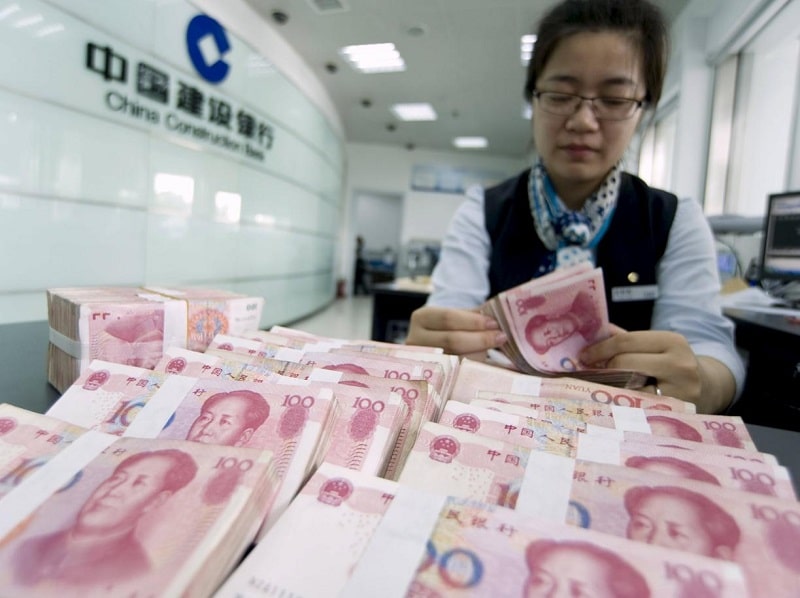
Sabic Unveils Bio-based Iterations of Popular Noryl Grades, Pioneering Sustainable Solutions
In a remarkable stride towards sustainable innovation, Sabic has introduced an array of bio-based versions for its well-regarded Noryl resin grades. These groundbreaking materials, developed using polyphenylene ether (PPE) base resins, are poised to revolutionize industries spanning automotive, construction, and lawn and garden. This momentous advancement comes as a response to the growing demand for eco-conscious solutions, propelling Sabic’s customers towards their ambitious sustainability objectives. By formulating these bio-based materials with PPE base resins that bear the International Sustainability & Carbon Certification (ISCC) Plus endorsement, Sabic has crafted materials that rival the performance of conventional fossil-based grades. Moreover, customers have the freedom to select from a range of bio-based content levels tailored to their specific Noryl grade preference. Recycled Fiber Bio-based BRICS
The practical feasibility of this bio-based paradigm shift is evidenced by the commercialization of three flagship Noryl grades. Although these exemplar materials constitute a fraction of the comprehensive portfolio, their introduction heralds an era of sustainable possibilities. This portfolio expansion augments the options for environmentally responsible Noryl resins, which have been recently enriched by Sabic’s post-consumer recycled (PCR) variants boasting over 25% PCR content.
Joshua Chiaw, the Director of Business Management for LNP & Noryl Specialties at Sabic, expressed his enthusiasm for this stride forward, stating, “We’re pleased to provide customers with new choices to reduce the global warming potential of both existing and new applications made with Noryl materials.” He went on to underline the pivotal role of bio-based PPE feedstocks in efficiently producing sustainable Noryl materials that can seamlessly substitute traditional grades. This substitution is not merely nominal, as the bio-based versions exhibit parity in performance and processability. The amplification of Sabic’s Noryl resin repertoire with these bio-based alternatives echoes the company’s strategic dedication to assist brands, original equipment manufacturers (OEMs), tier suppliers, and molders in accomplishing their sustainability benchmarks.
Among the triumvirate of bio-based grades introduced by Sabic, the first is Noryl GTX902BIO3 resin. Engineered as a bio-based PPE alloy, it promises unrivaled chemical resistance and paintability. Recycled Fiber Bio-based BRICS
Applications in the automotive domain such as wheel covers, electrical components, and painted trims stand to benefit significantly from this pioneering material. On a parallel trajectory, Noryl NH5120BIO4 resin unveils its potential in diverse scenarios like housing and enclosures, HVAC components, and photovoltaic/solar junction boxes. This non-brominated and non-chlorinated flame-retardant resin, endowed with a UL flame rating of V1 at 1.5 mm, aligns seamlessly with environmentally conscious manufacturing practices, free from intentionally added per- or polyfluorinated substances (PFAS). The resin offers an equilibrium between heat resistance, flow dynamics, hydrolytic stability, dimensional resilience, and creep performance, retaining its mechanical attributes even in harsh outdoor environments.
Noryl GFN2BIO3 resin, the third commendable entrant, is distinguished by its remarkable strength, hydrolytic stability, dimensional endurance, low warpage propensity, and low specific gravity. This bio-based material carries the esteemed UL746C outdoor suitability rating of F1, rendering it an exceptional contender for both indoor and outdoor applications across the construction, building, and lawn and garden sectors. Recycled Fiber Bio-based BRICS
Evelyn Pearson, Senior Manager at Sabic, proudly emphasized the company’s commitment to propelling a circular plastics industry by highlighting their Selkirk, NY, facility’s attainment of the ISCC PLUS accreditation. This accreditation is a testament to the facility’s capacity for producing PPE resin and compounds originating from renewable, bio-circular sources. Sabic’s blueprint includes plans to extend ISCC PLUS certification to Noryl grades formulated with these bio-based feedstocks across the global network of Noryl compounding plants. This resounding achievement underscores Sabic’s relentless pursuit of building a sustainable future through circular plastics.
In summary, Sabic’s revelation of bio-based iterations for the revered Noryl resin grades signifies an epochal stride towards sustainability in industries as diverse as automotive, construction, and lawn and garden. These materials, anchored by polyphenylene ether base resins, have the potential to revolutionize manufacturing paradigms, offering choices that effectively reduce the environmental footprint. Sabic’s resolute commitment to innovative circular practices has culminated in a breakthrough that not only propels their own sustainability trajectory but also empowers their customers to embark on a more environmentally conscious path.

On the eve of the highly anticipated BRICS summit in Johannesburg, the global stage braced itself for a significant departure from convention
Luiz Inacio Lula da Silva, the Brazilian president, made a resounding declaration that would undoubtedly set the tone for the summit’s proceedings. Mere hours after the summit’s commencement, Lula da Silva announced his intention to propose a revolutionary concept to his fellow counterparts from Russia, India, China, and South Africa: the adoption of a unified currency. This proposed common currency aims to foster greater international trade, freeing BRICS nations from the constraints of relying on a third-party currency, most notably the US dollar.Recycled Fiber Bio-based BRICS
This audacious proposition carried an unmistakable message—the BRICS nations, collectively constituting a quarter of global wealth and representing 42% of the world’s population, were no longer content with a secondary status on the world stage. Instead, they sought to assert themselves as a formidable platform for advancing an alternative path diverging from Western norms.
Lula da Silva’s voyage down this uncharted economic avenue gained its initial momentum during his engagement with Xi Jinping, the leader of China. This summit marked Xi Jinping’s second foray abroad after a pivotal meeting with Vladimir Putin. China’s intent was clear: to solidify its influence among developing and emerging nations, a strategic move in light of escalating tensions with the United States and domestic economic concerns—most notably, the turmoil within the real estate sector. By journeying to South Africa, Xi Jinping offered a response to Joe Biden’s engagement with leaders from Japan and South Korea. The format, resembling a “mini-NATO,” aimed to bolster military cooperation against North Korea and counterbalance China’s growing assertiveness and influence. Recycled Fiber Bio-based BRICS
Xi Jinping’s presence in Johannesburg extended an opportunity to propagate his vision of a world order distinct from the US-centric framework, a vision increasingly evident amidst heightened geopolitical tensions linked to the Ukrainian conflict.
Beijing sources, reported by the Financial Times, corroborated China’s strategy of exerting pressure on the other BRICS nations to forge a rival bloc to the G7. The premise underpinning this tactic is that by expanding their share of the global GDP to rival that of the Group of Seven, the BRICS nations would inevitably command a more influential voice on the international stage. However, divergent viewpoints within the bloc exist, with some member countries advocating for the BRICS to remain a non-aligned consortium dedicated to advancing the economic interests of developing nations.
In the midst of these dynamics, Cyril Ramaphosa, the summit’s host and South African President, emphasized that his nation would not become ensnared in the competition among global powers arising from the Ukraine conflict. South Africa maintained a policy of non-alignment and steadfastly refused to condemn Russia for its actions, opting instead for a diplomatic approach. This stance drew both praise and criticism from the international community. Recycled Fiber Bio-based BRICS
The absence of Vladimir Putin, who could only participate via video conference due to an outstanding international arrest warrant for war crimes in Ukraine, underscored the centrality of Xi Jinping at the summit. The primary agenda revolved around the potential expansion of the BRICS bloc. Beijing claimed that over 20 nations were aspiring to join the bloc, and Lula da Silva echoed this sentiment. He emphasized the vital role of cooperation among Southern Hemisphere nations in addressing inequalities, climate challenges, and fostering a more equitable global order. Lula da Silva voiced his support for the inclusion of Saudi Arabia, Argentina, and even Iran into the BRICS fold.
While the summit deliberated the prospect of a unified BRICS currency, the implications of such a move were already being weighed. Robert Kiyosaki, a prominent American entrepreneur and co-author of books with Donald Trump, ventured that a shared BRICS currency would spell the decline of the US dollar. His words reverberated through the corridors of international finance, highlighting the potential transformative impact of the BRICS’ audacious proposal. Recycled Fiber Bio-based BRICS
As the world awaited the outcomes of the BRICS summit, it was clear that a new era of international economics and geopolitics was being ushered in. The proposition of a unified currency was not merely an economic concept; it symbolized a potent shift in global power dynamics and a fervent aspiration to forge an alternative path in the face of established Western norms. The decisions made in Johannesburg would ripple far beyond the confines of the conference room, shaping the trajectory of international relations and financial systems for years to come.

Neste Announces Agreement to Produce Bottles Using Renewable & Recycled Material
Neste’s RE, incorporating recycled and renewable material, will be used in making PET bottles.
Neste announced a collaboration that will bring its RE, a polyethylene terephthalate derived from renewable and recycled material, to bottle production. The cooperation between Neste, Suntory, and Mitsubishi will enable the production of PET resin on a commercial scale.
Neste RE is Neste’s feedstock for polymers production, made 100% from bio-based raw materials such as waste and residues, e.g. used cooking oil, to replace fossil feedstock in the value chain. Japanese beverage company Suntory will utilize the renewable PET resin to produce bottles for its products in 2024. Recycled Fiber Bio-based BRICS
A new partner for Neste in Japan, ENEOS will use bio-intermediates based on Neste RE to produce bio-PX (Bio-Paraxylene) at its Mizushima Refinery in Okayama, Japan. The bio-PX will then be converted to PTA (Purified Terephthalic Acid) and subsequently to PET resin for Suntory to use to manufacture their PET bottles. Mitsubishi Corporation will be coordinating the collaboration between the value chain partners.
“Through partnering along the value chain, Neste can contribute to reducing the polymers and chemicals industry’s dependence on fossil resources as well as to manufacturing of products that have a lower carbon footprint,” says Lilyana Budyanto, head of sustainable partnerships APAC at Neste Renewable Polymers and Chemicals business unit.
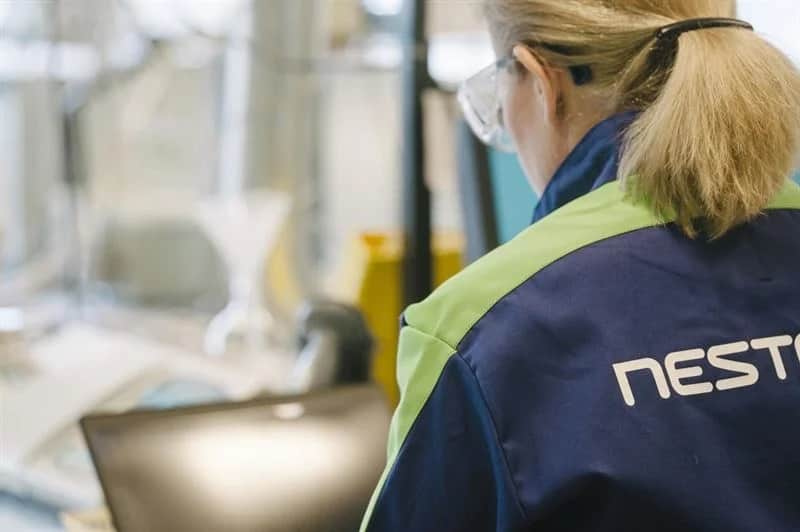
‘Plastics bashing must stop’
Instead, learn from regrettable past mistakes and stride towards sustainability
In its ‘Let’s talk about Chemical Recycling” series, the Plastics and Rubber Machinery division of the German VDMA association talks to experts and stakeholders active in the chemical recycling space. Ingemar Bühler, Managing Director Plastics Europe Germany wishes to make a least one thing clear: “Chemical recycling is competing with incineration, not mechanical recycling.”
Mr. Bühler, how long will it be before chemical recycling can take place on a large industrial scale?
At present, there are about 140 chemical recycling projects worldwide. Most of the active plants are currently in pilot operation. Some companies, however, are already one step ahead. In Enningerloh, Westphalia, for example, the Carboliq company has a plant that produces an industrially usable pyrolysis oil from the input of an adjacent recycling yard. Other plant projects are also on the verge of reaching a new scale of between 40,000 and 150,000 tonnes of processed material per year. Two plants are currently planned on a large industrial scale. Recycled Fiber Bio-based BRICS
Lyondell Basell is planning a large plant in Belgium, and Dow Chemical is looking to build a large plant together with its partner Mura in Saxony.
The prerequisite, however, is the approval of chemical recycling within EU law. Should this be the case this year, then the plant would probably be ready for operation by 2025.
This approval is by no means certain in Brussels, however.
The response of politicians, both in Europe and in Germany, is often that chemical recycling does not work at all. That is simply nonsense. But there is also a fair criticism, namely that despite great progress, the energy input for chemical recycling is much higher than that for mechanical recycling. Mechanical recycling is highly efficient: PET bottles, for example, can be mechanically recycled several dozen times until the polymer structures can no longer withstand further use.
In today’s legislation, the idea is to burn these polymers that are past their usability stage, and to generate energy from them. However, the cost of incineration is high, and the process releases CO2. Instead of incineration, it would be much better in our view to chemically recycle these polymers. In the best case, no CO2 is released, and the carbon continues to circulate. Chemical recycling is therefore not in competition with mechanical recycling, but with incineration. Recycled Fiber Bio-based BRICS
Where else does it make sense?
With chemical recycling processes, we can also process waste fractions where mechanical recycling processes reach their limits. A good example is car tyres. We can already recycle parts of tyres mechanically, but we can apply complementary chemical processes to recover the carbon and keep it in the cycle. In our industry, we are therefore convinced that this will definitely happen. If we politically hamper chemical recycling in the EU, it will happen elsewhere in the world, but I am confident that eventually we will have chemical recycling in Europe as well.
What makes you so confident?
The strict separation and interest groups are softening. It is no longer just the plastics manufacturers who are investing in chemical recycling. Increasingly, it is also large mechanical recyclers. In turn, there are also chemical companies building mechanical recycling plants because they want the carbon back in both ways. It is becoming increasingly clear that the combination makes perfect sense if you want to get rid of the big waste mountains and establish a real circular economy.
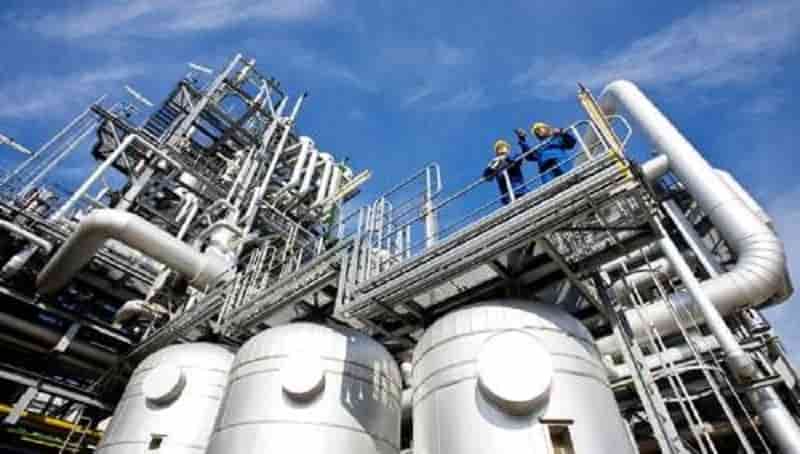
Revolutionizing Retail Sustainability: Recyclable Trays Transform Packaging Landscape
In the relentless pursuit of sustainable practices, retailers are embracing innovative solutions to align with consumer preferences and stringent government regulations. Amid this paradigm shift, Clearly Clean Products emerges as a trailblazer, offering a game-changing alternative to traditional expanded polystyrene (EPS) food trays. The company introduces two groundbreaking recyclable overwrapped food tray options, catering to grocery retailers, wholesalers, and consumers alike. With these visionary creations, Clearly Clean Products not only champions ecological well-being but also ushers in newfound cost-efficiency and convenience. Recycled Fiber Bio-based BRICS
The first in their repertoire is an all-encompassing solution for poultry, meat, produce, seafood, and deli products. Made from crystal-clear PET, these patented trays undergo thermoforming with a thinner gauge sheet compared to their food processor-grade counterparts. This innovation empowers consumers to observe their chosen products from every angle, enhancing the shopping experience. Crucially, these trays meet or surpass all shelf-life requirements, superseding the performance of EPS trays. Recognizing the value of choice, Clearly Clean Products also provides the option of transparently colored trays, further elevating aesthetic appeal.
A defining feature of these trays is their recyclability, underlining the company’s unwavering commitment to sustainability. Accepted by recycling facilities that handle other PET packaging, these trays bear a conspicuous #1 PET recycling symbol, a beacon for responsible disposal. Moreover, these trays align seamlessly with existing recycling infrastructure, often available curbside. Beyond their environmental merit, the trays have also been meticulously designed to harmonize with the operational convenience of retailers. The grocery program accommodates tray packaging in quantities akin to foam trays, facilitating straightforward integration at the store level. Recycled Fiber Bio-based BRICS
Jimmy Herring, the visionary CEO of Clearly Clean Products, underscores that these trays encapsulate more than environmental consciousness; they stand as a testament to practicality. Recognizing the historical impediments of packaging and cost, the company’s solution deftly tackles both. Employing a novel approach, trays are shipped in familiar boxes and quantities, circumventing the learning curve. Furthermore, the innovation extends to manufacturing, where a thinner gauge contributes to reduced costs without compromising on structural integrity.
A pivotal attribute of these trays is the patented rolled edge technology, an amalgamation of form and function. This ingenious feature reinforces the trays, thwarting tear-inducing friction with overwrap film, while offering threefold resistance to bow tying—an issue stemming from weak sidewalls. The trays emerge unscathed from high-speed processors, retaining their structural robustness. Even in the face of film or styling challenges, these trays exhibit resilience, ensuring that the products they cradle remain intact. The rolled edge architecture, in addition to preventing leakage, aligns with the enduring attributes of EPS trays, all within an eco-conscious framework. Recycled Fiber Bio-based BRICS
The versatility of Clearly Clean Products’ offerings shines through with their extensive array of tray sizes and configurations. From compact 2S trays to large 15D variants, the options cater to diverse requirements. The introduction of a compartmented tray for meatballs and patty-style configurations speaks to their commitment to nuanced solutions. Consumers can also revel in customization, with options to tailor size, thickness, shape, and color.
The company provides a dual-tiered offering with processor-grade and supermarket-grade trays, the latter boasting a streamlined design. Processor-grade trays are characterized by their enhanced thickness, built to withstand shipping and rigorous high-speed equipment usage. Designed for optimum utility, these trays also exhibit packaging that suits processing needs.
The immediate resonance of these trays is a testament to their transformative impact. With a wave of interest from multiple clients, Clearly Clean Products bears witness to a paradigm shift. While historically focused on food processors, their forward-looking approach resonates with retailers and wholesalers who are increasingly seeking eco-friendly alternatives in response to consumer pressure, government mandates, and corporate sustainability mandates. Recycled Fiber Bio-based BRICS
In the ever-evolving landscape of retail, Clearly Clean Products stands as a beacon of innovation and sustainability. Their recyclable trays transcend mere packaging, paving the way for a greener future without sacrificing convenience or efficacy. As consumer awareness and eco-consciousness continue to shape the market, Clearly Clean’s visionary solutions mark a resounding step towards a more sustainable and responsible retail ecosystem.

The BRICS Summit: Navigating the Path Between Single Currency and Chinese Influence
The BRICS summit, a gathering of the world’s five most significant emerging economies—Brazil, Russia, India, China, and South Africa—embarks on a complex journey, oscillating between aspirations for a unified front and divergent national interests. The summit, convened in Johannesburg, is a microcosm of the larger global landscape, where countries grapple with the tension between regional ambitions and global powers, chiefly China and the West. Recycled Fiber Bio-based BRICS
Amidst fervent discussions, the fundamental question arises: should the BRICS evolve into a rival body to the traditional Western powers, notably the G7? This query resonates with varying intensity among the participating nations. While Beijing and Brasilia advocate for the BRICS to emerge as a formidable counterforce to the G7, Moscow adopts a more nuanced stance. Amid shifting geopolitical dynamics, particularly heightened by the Russia-Ukraine conflict, China is asserting itself as a unifying force, framing the BRICS as an “open and inclusive” mechanism to project its influence. This narrative shift marks a subtle weakening of Russia’s grip on the group’s dynamics.
President Xi Jinping’s presence in Johannesburg exemplifies China’s strategic maneuvering to consolidate its position on the global stage. With the arrest warrant hanging over Russian President Putin, China’s President Xi endeavors to fill the void left by Putin’s absence, underscoring his intentions to lead the BRICS narrative. China’s designs extend beyond just leadership; it aims to challenge the dollar-centric global order, notably through discussions with Brazilian President Lula.
Proposing an alternative currency for intra-BRICS trade, divorced from the US dollar, underscores their commitment to reshape global financial dynamics. However, translating this vision into a functioning alternative necessitates overcoming challenges rooted in political alignments and economic disparities. Recycled Fiber Bio-based BRICS
The BRICS-Africa Outreach summit, with its diverse lineup of participants including UN Secretary-General Guterres and the former Brazilian President Dilma Rousseff, signifies the potential to forge new alliances and partnerships. However, the discord with Morocco, which distances itself from anti-G7 sentiments, highlights the tensions underpinning such ambitious endeavors. While the ingredients for a genuine alternative to the G7 are present, its feasibility hinges on overcoming entrenched divisions and apprehensions about China’s growing influence.
Xi’s envisioned multipolarity, aimed at countering Washington’s dominance, faces resistance and skepticism. Arab nations, despite their strategic interests, exhibit tepid enthusiasm for joining the BRICS. The pressing call for de-dollarization marks a significant shift, particularly for countries like Brazil and South Africa seeking greater economic autonomy. Yet, uncoupling trade from the dollar is only the first step in realizing a global financial reset, requiring a level of consensus that remains elusive.
The nascent anti-G7 sentiment, while embryonic, is juxtaposed against the more advanced push for BRICS expansion. Recycled Fiber Bio-based BRICS
The unique positioning of Ukraine, not a formal member but closely aligned with the group, underscores the multifaceted chess game at play. Ukraine’s perspective, articulated through influential figures like Podolyak, suggests that China’s ascendancy could weaken Moscow’s clout, providing a glimmer of hope for a country embroiled in regional conflict.
However, China’s rise is not without vulnerabilities. An economic slowdown and concerns about a real estate bubble cast a shadow over its status as a star player. President Xi’s recent arrival in Johannesburg, following the Camp David meeting, appears almost like an SOS signal in the wake of mounting global concerns about China’s behavior, particularly in the Indo-Pacific.
In the panorama of the BRICS summit, a mosaic of aspirations, interests, and power plays unravels. The delicate interplay between the desire for an alternative to the G7 and apprehensions about Chinese hegemony underscores the intricate tapestry that world leaders navigate. As they convene to deliberate, the future trajectory of the BRICS holds the promise of a transformed global order, but the journey is fraught with challenges that demand deft diplomacy, shared vision, and above all, a willingness to transcend entrenched divisions for the collective good. Recycled Fiber Bio-based BRICS
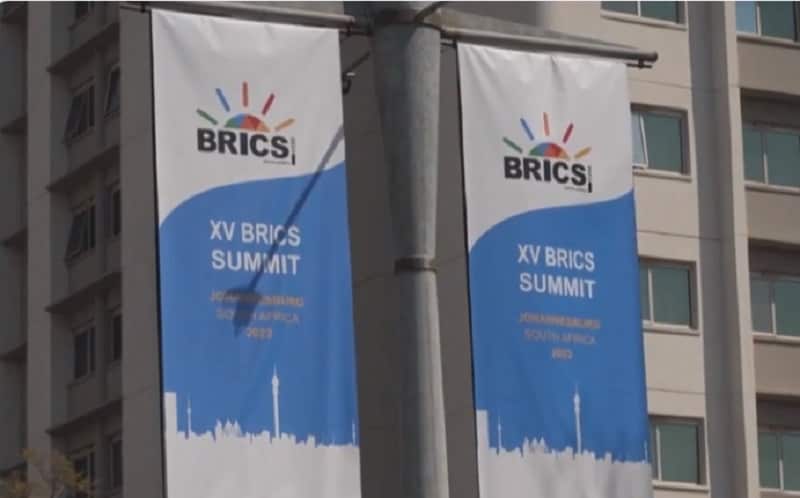
Bottle to Bottle China Economy – Is China’s Race Already Finished? 22-08-2023
Recycled Fiber Bio-based BRICS
